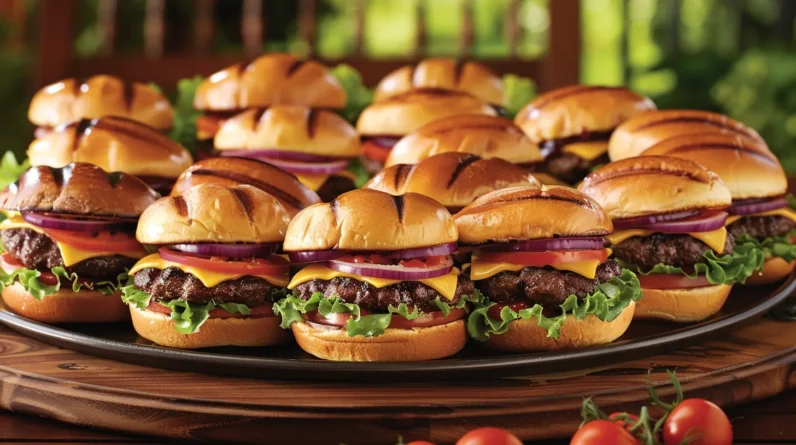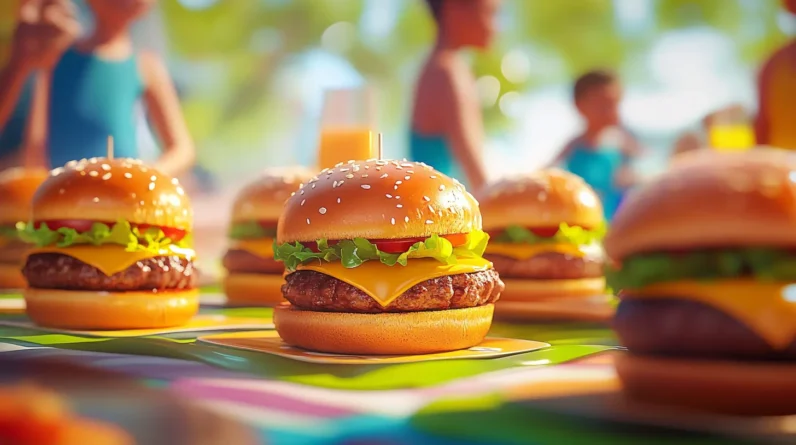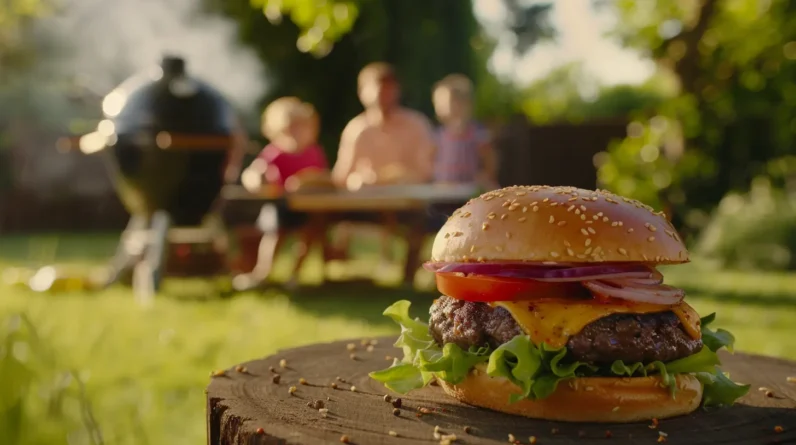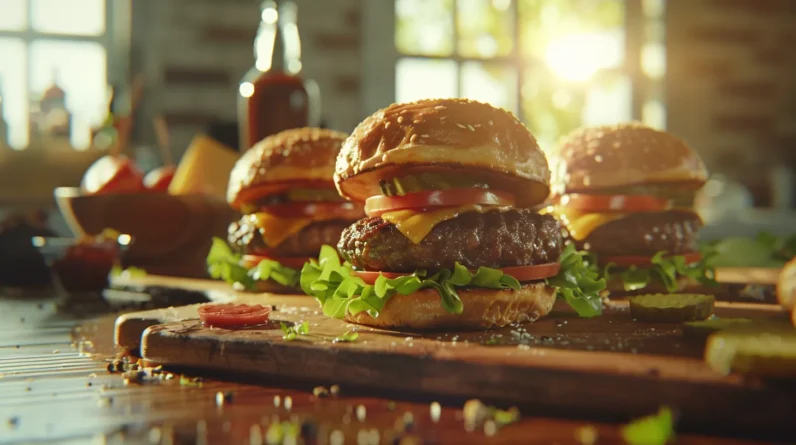
We’ve all had dry burgers, but we can achieve perfect juiciness by choosing the right meat and handling it gently. We should cook on medium-low heat and limit flipping. By following these tips, we can make a big difference. We’ll explore more techniques to help us get it just right, and with a little practice, we’ll be on our way to creating burgers that are full of flavor and juicy too.
Understanding Burger Anatomy
We’re diving into the world of burgers, and it’s vital we comprehend their anatomy. We’ll break it down into key components: patty, bun, cheese, lettuce, tomato, and condiments. Understanding how these parts interact is essential.
We’ll examine how each element affects the overall burger, focusing on texture, flavor, and moisture. By grasping burger anatomy, we’ll set the stage for creating juicy, balanced burgers that impress. This foundation will help us identify what makes a great burger and how to achieve it.
Choosing the Right Meat
When it comes to building a great burger, the type of meat you choose is essential. We look for meats with a good fat content, around 20%, to guarantee juiciness. Grass-fed beef, wagyu, or dry-aged options offer rich flavors. We consider the meat’s origin, breed, and diet to achieve the perfect balance of flavor and moisture.
Selecting the right meat, we set ourselves up for a juicy, flavorful burger. We opt for high-quality meats to elevate our burger game.
Handling and Forming Patties
Now that you’ve chosen a high-quality meat, it’s time to handle and form patties that’ll make your burger shine. We gently shape the meat to avoid compacting it, which can lead to dryness. We form patties that are evenly sized, about 3/4 inch thick, and slightly indented in the center.
This helps them cook consistently and prevents them from puffing up too much. We handle the meat just enough to shape it, minimizing pressure.
Cooking Techniques for Juiciness
As we cook our burgers, the techniques we use can make or break their juiciness. We’re using gentle pressing to avoid squeezing out juices. We’re also cooking on a medium-low heat to prevent the outside from burning before the inside is cooked.
This helps retain moisture, and we’re not flipping them excessively, which can lead to dryness. By using these techniques, we can achieve a juicy burger that’s full of flavor. We’re mastering the art of cooking burgers.
Temperature Control and Timing
Because we’re aiming for a perfectly cooked burger, we’re focusing on temperature control and timing to get it just right. We use a thermometer to verify the grill’s at the ideal temperature. We’re cooking burgers to the desired internal temperature, then letting them rest.
This allows juices to redistribute, resulting in a juicy burger. We’re monitoring time closely to prevent overcooking, as it’s essential for achieving the perfect balance of doneness and juiciness.
Additional Tips for Burger Perfection
When we’re handling burgers, we’re taking extra care to prevent them from drying out, and that’s where gentle handling comes in – we’re not pressing down on them with our spatulas, which can squeeze out juices and make them tough.
We’re using techniques like:
– Letting them rest
– Not overworking meat
– Using right doneness
– Adding minimal seasonings
Conclusion
We’ve cracked the code to a juicy burger, and now our taste buds sing. With the right meat, gentle handling, and precise cooking, we reveal a symphony of flavors. Each bite is a harmonious balance of textures, a culinary dream that melts in our mouths, leaving us craving another savory note.







